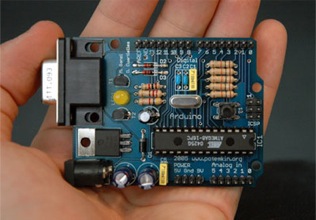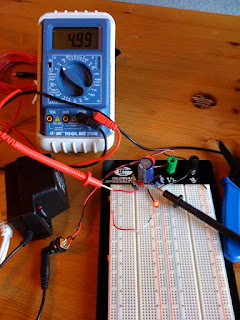As a kid, I used to spend a lot of time inventing and building electronic circuits. I could have told you immediately that yellow-violet-orange meant a 47 kilo-ohm resistor. Alas, those details have slipped into the murky depths of time, but I have regained an interest in electronics recently because I’ve seen how powerful and easy-to-use modern microprocessors are.
Monthly Archives: March 2009
Week 8: How twitter might change news
Well, I’m not exactly keeping up a weekly project every week but I thought I might as well number sequentially and in some weird dream land I might catch up to the actual week number… but anyway…
This week, the creation is another essay. It might seem like cheating a little but I think that writing this particular analysis was creative in its own way. I absorbed myself in a process and learned a lot and then created by distilling it.
The essay is over on Cathemeral Thinking but this is how it starts:
On Thursday morning (US Pacific Time), March 12, 2009, a piece of debris came close enough the International Space Station to require the astronauts to take refuge in the Soyez module, just in case there was a collision. In the end, the debris passed by without incident.
I experienced this event almost entirely through twitter. This essay is to share my experience about how this is an example of ways in which somebody can follow news in a format completely different from conventional news reporting. This experience is, obviously, peculiar to me, in that only I follow my set of twitter users, and this is my personal reaction to it. However, I believe that this kind of process is starting to occur for many more people and it changes the way those people will use conventional news reporting.
What does twitter mean for breaking news stories? The ISS near-collision case study
On Thursday morning (US Pacific Time), March 12, 2009, a piece of debris came close enough the International Space Station to require the astronauts to take refuge in the Soyez module, just in case there was a collision. In the end, the debris passed by without incident.
I experienced this event almost entirely through twitter. This essay is to share my experience about how this is an example of ways in which somebody can follow news in a format completely different from conventional news reporting. This experience is, obviously, peculiar to me, in that only I follow my set of twitter users, and this is my personal reaction to it. However, I believe that this kind of process is starting to occur for many more people and it changes the way those people will use conventional news reporting.
Continue reading What does twitter mean for breaking news stories? The ISS near-collision case study


